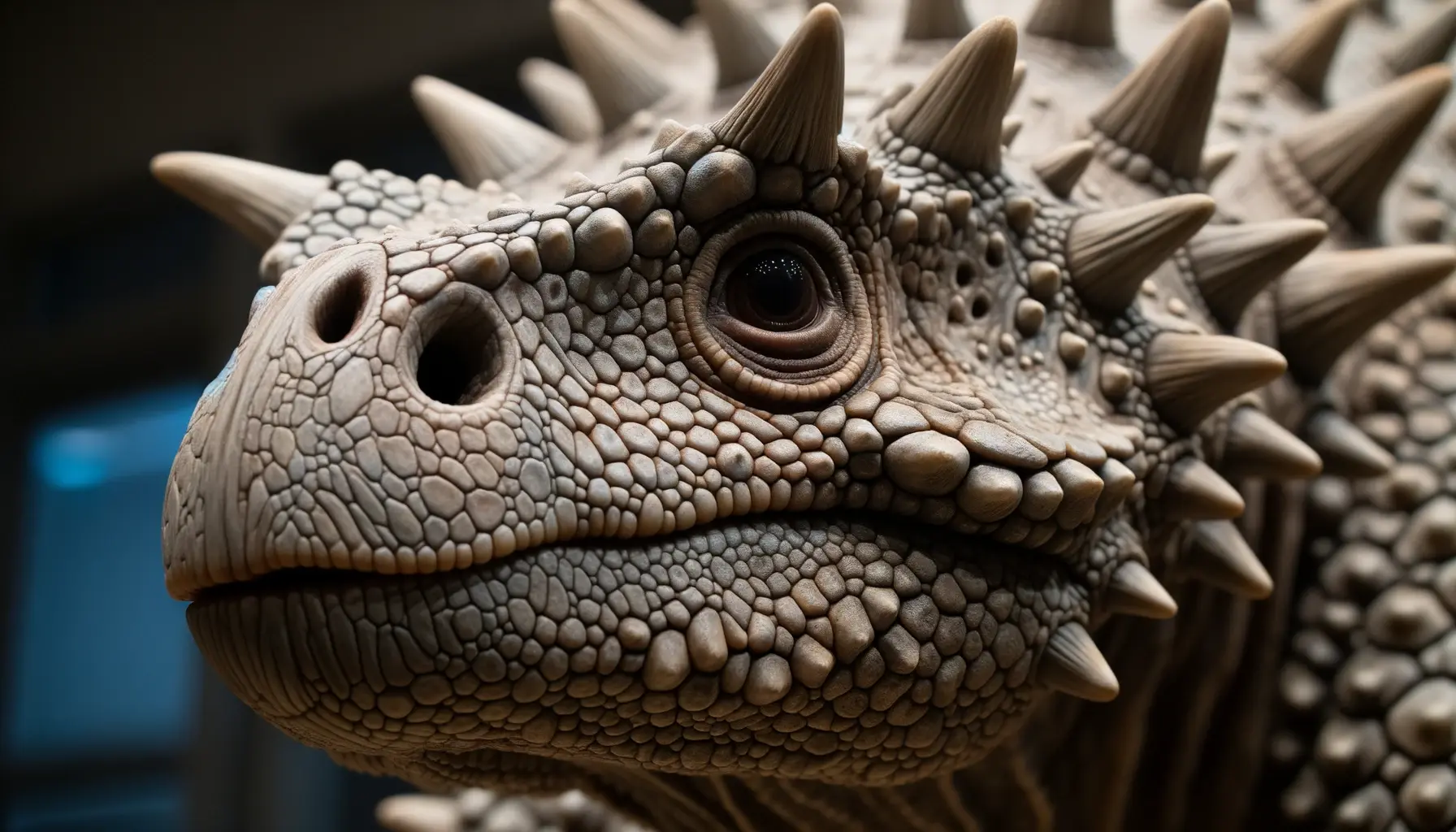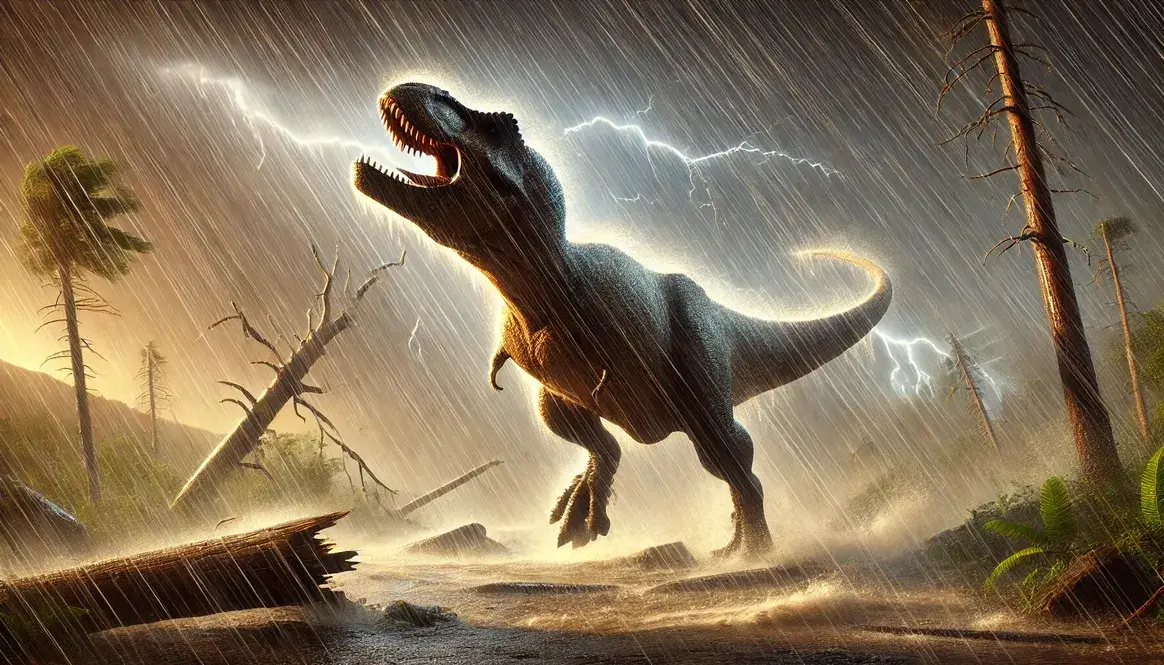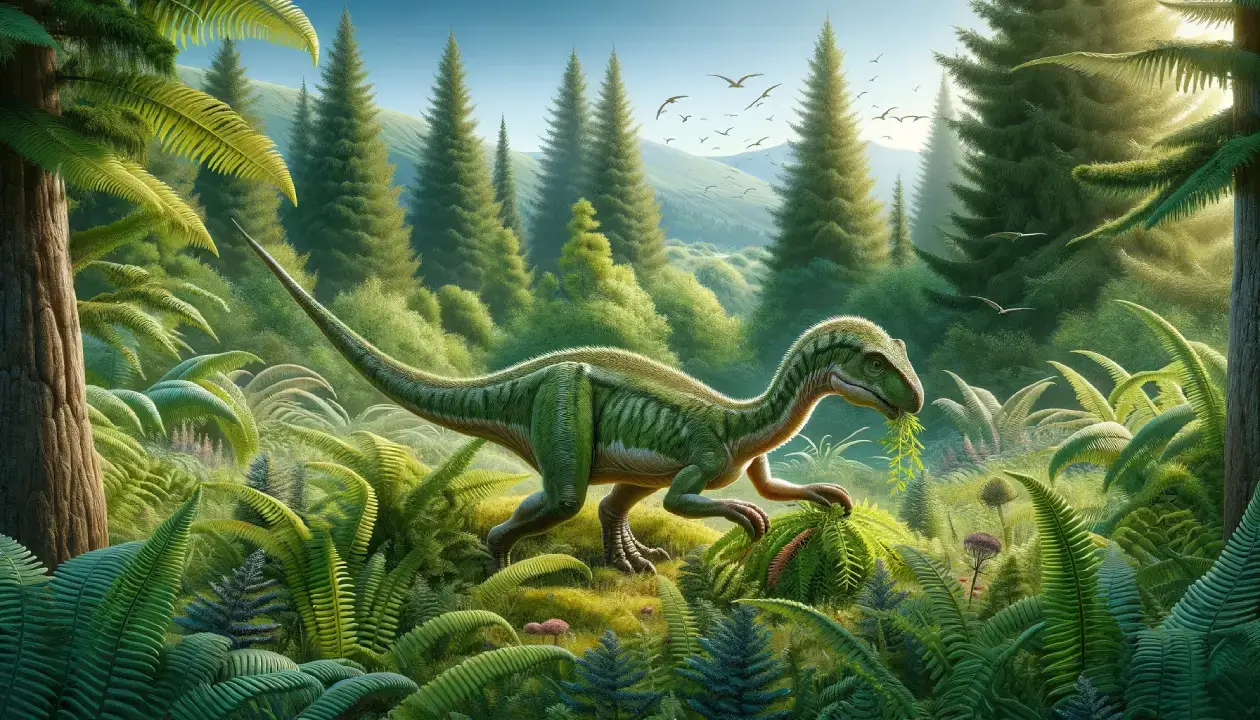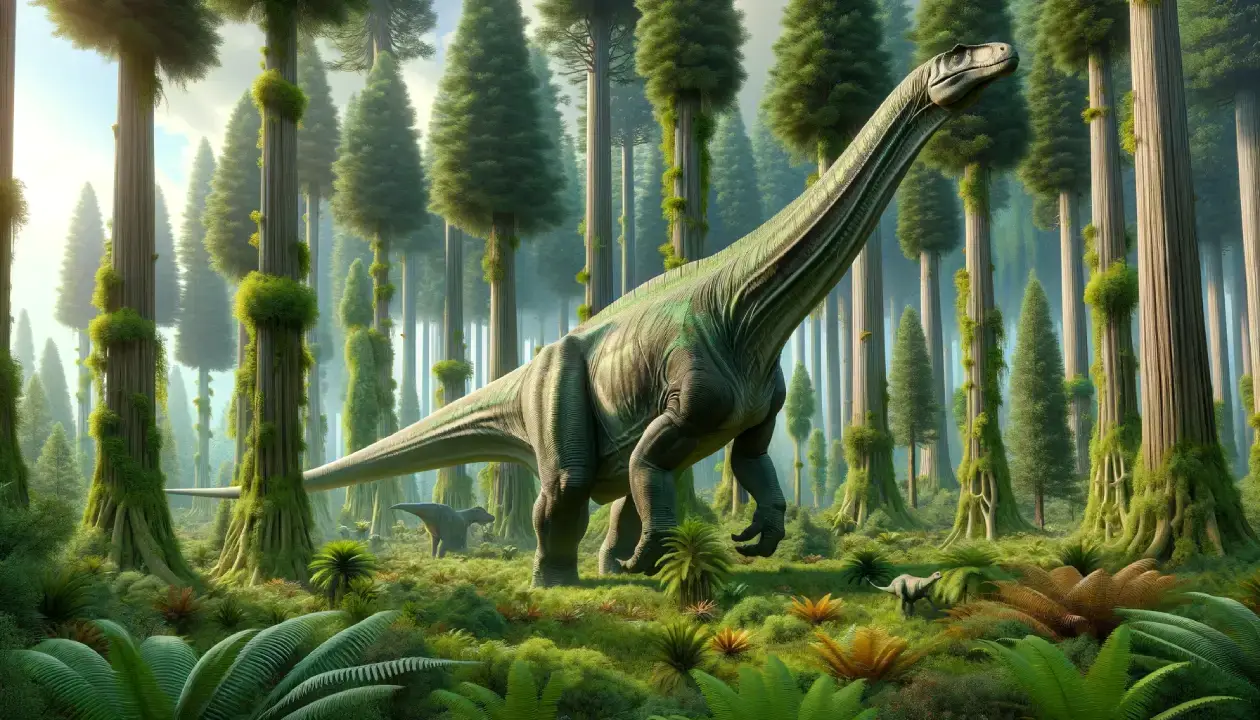Ankylosaurus was a massive armored dinosaur that lived in what is now North America during the Late Cretaceous period, about 70 to 66 million years ago. It was one of the last surviving non-avian dinosaurs and the largest of its kind. It had a thick, knobby armor covering its head, neck, back, and tail, as well as a heavy club on the end of its tail that it could swing to fend off predators. It was a herbivore that fed on low-growing plants and had a small brain relative to its body size.
Basic Information
| Feature | Details |
| Time Period | Late Cretaceous (68-66 million years ago) |
| Diet | Herbivore |
| Length | 6-8 meters (20-26 feet) |
| Weight | 4.8-8 metric tons (5.3-8.8 short tons) |
| Size | Large |
| Posture | Quadrupedal |
| Locations | USA, Canada |
| Continent | North America |
| Type | Ankylosaurs |
| Habitats | Forest, Grasslands, Floodplains |
Description of Ankylosaurus
Historical Context
Ankylosaurus was one of the last non-avian dinosaurs to live before the mass extinction event that wiped out most of them 66 million years ago. It was named by Barnum Brown in 1908, based on a partial skeleton he found in Montana in 1906. Since then, only a few more specimens have been discovered, none of them complete. Ankylosaurus is the type genus of the family Ankylosauridae, which includes other armored dinosaurs with tail clubs.
Physical Attributes
Ankylosaurus had a broad, low-slung body with short legs and a long tail. Its head was wide and flat, with two horns projecting backward from the back of the skull and two smaller horns below them pointing downward and backward. Its nostrils faced sideways rather than forward, unlike most other dinosaurs. Its jaws were covered with a horny beak and had small, leaf-shaped teeth for cropping plants. Its most distinctive feature was its armor, which consisted of bony plates, or osteoderms, embedded in the skin and covering most of the body except for the belly. The armor was thickest on the neck, back, and tail, where it formed rows of large knobs and spikes. The tail ended in a massive club made of fused osteoderms and vertebrae, which could be swung as a weapon.
Feeding Habits
Ankylosaurus was a herbivore that fed on low-growing plants such as ferns, cycads, and horsetails. It had a broad muzzle that allowed it to take large bites of vegetation. It did not have complex teeth for chewing, so it swallowed its food whole or with minimal processing. It had a large gut that could digest tough plant matter with the help of symbiotic bacteria.
Unique Features
Ankylosaurus had several unique features that distinguished it from other ankylosaurs and dinosaurs. One of them was its fused bones, which gave it extra strength and rigidity. The name Ankylosaurus means “”fused lizard”” or “”stiffened lizard”” because of this feature. Another unique feature was its tail club, which was one of the largest and heaviest among ankylosaurs. The tail club could deliver powerful blows to predators or rivals, breaking bones or causing internal injuries. Some scientists have suggested that the tail club could also produce loud sounds by hitting the ground or other objects, possibly for communication or intimidation.
Movement and Speed
Ankylosaurus was not a fast or agile dinosaur. It walked on four legs and had a low center of gravity, which made it stable but also limited its mobility. It could not turn quickly or run for long distances. Its top speed has been estimated to be around 10 km/h (6 mph), similar to a human walking pace. However, it could make sudden movements when necessary, such as swinging its tail club or raising its head.
Cultural Impact
Ankylosaurus has been featured in many books, movies, games, and toys as a popular dinosaur. It is often portrayed as a formidable opponent for carnivorous dinosaurs such as Tyrannosaurus rex or as a loyal companion for human characters. Some examples of its appearances in popular culture are Jurassic Park III (2001), Jurassic World (2015), Jurassic World: Fallen Kingdom (2018), Jurassic World: Camp Cretaceous (2020), Dinosaur Train (2009-present), and Dino Dan (2010-2013).
Interesting Facts
- Ankylosaurus was one of the largest ankylosaurs ever, rivaling some sauropods in size and weight.
- Ankylosaurus lived alongside other famous dinosaurs such as Triceratops, Edmontosaurus, and Tyrannosaurus rex in North America at the end of the Cretaceous period.
- Ankylosaurus had sinuses and nasal chambers in its snout that may have helped it regulate its body temperature or produce sounds.
- Ankylosaurus had very small eyes relative to its body size, suggesting that it relied more on other senses such as smell and hearing.
- Ankylosaurus may have lived in herds or groups for protection and social interaction.
Related Dinosaurs
- Anodontosaurus: A close relative of Ankylosaurus that had a shorter tail club and more spikes on its armor.
- Euoplocephalus: Another close relative of Ankylosaurus that had a longer tail club and more plates on its armor.
- Scolosaurus: A more primitive relative of Ankylosaurus that had a smaller tail club and less armor on its body.







